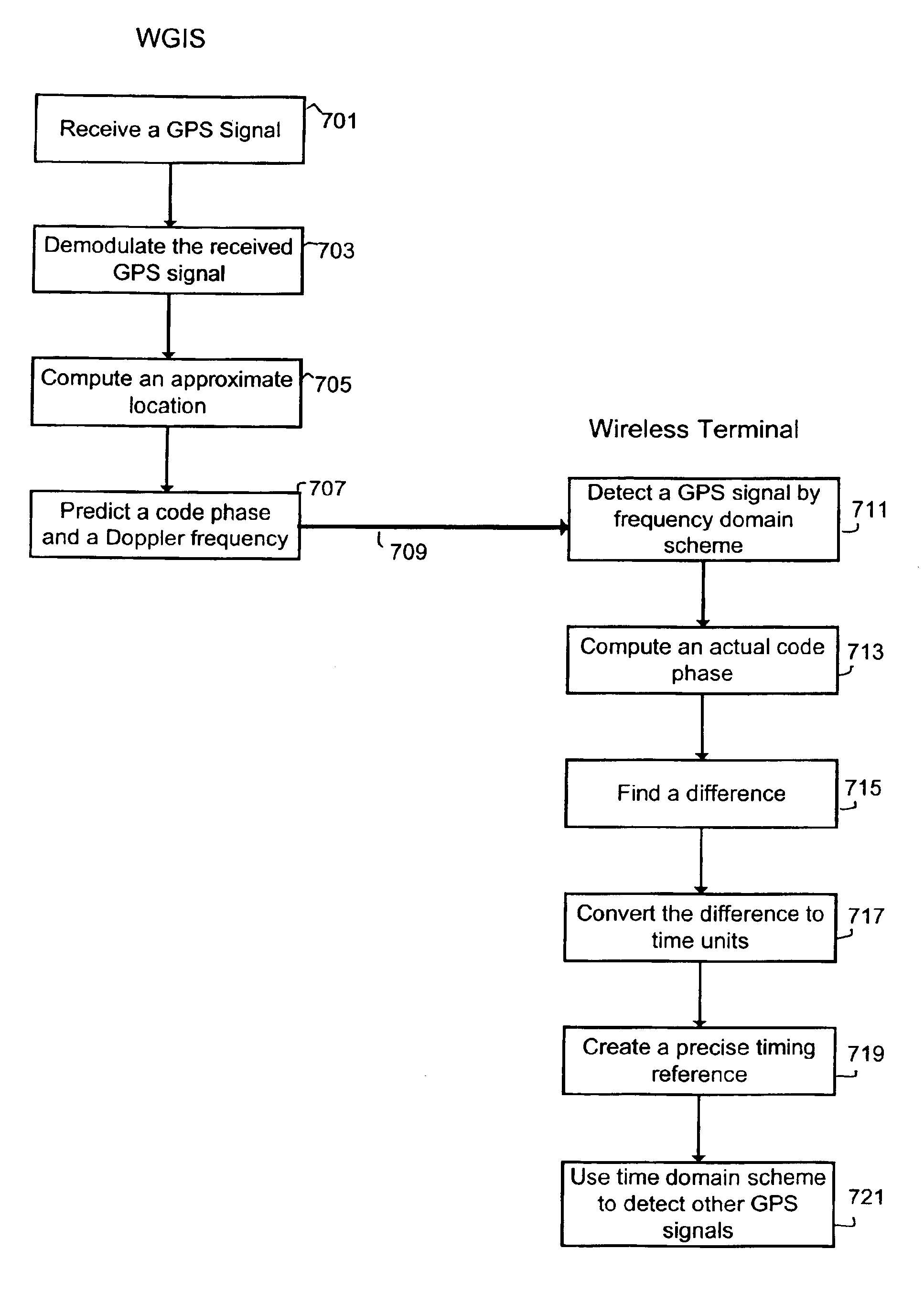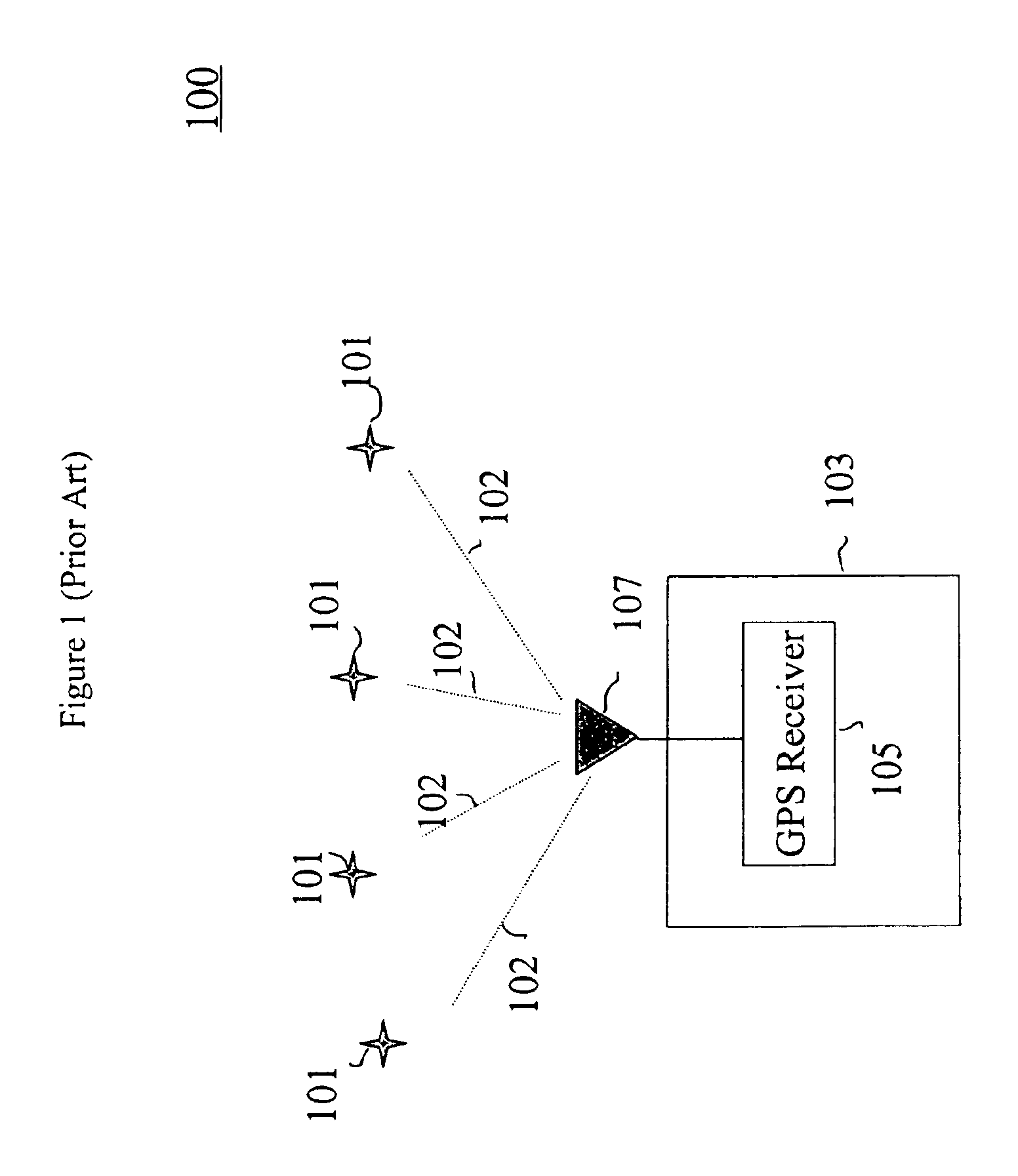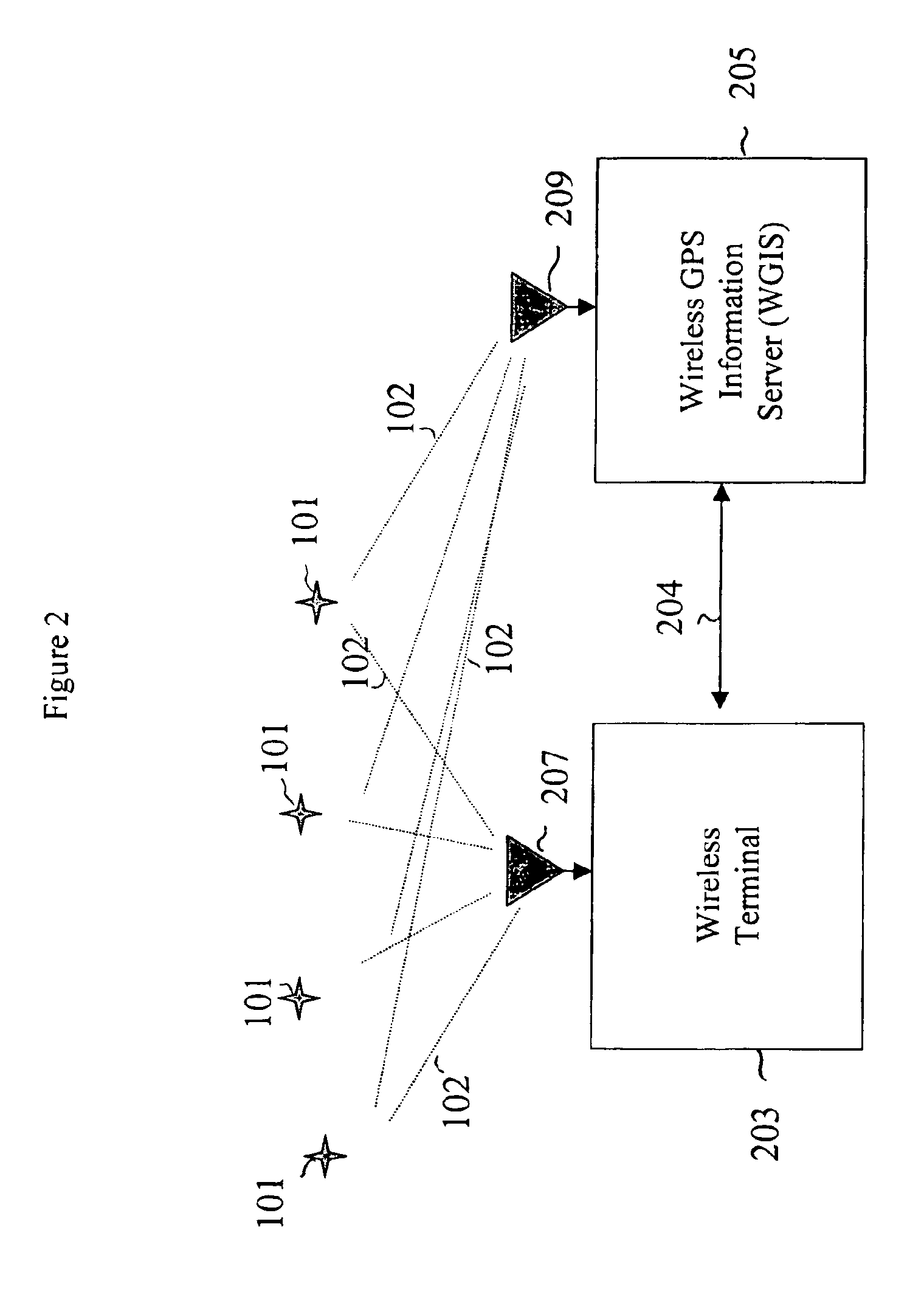GPS signal acquisition based on frequency-domain and time-domain processing
a frequency-domain and time-domain technology, applied in the field of satellite navigation systems, can solve the problems of placing a heavier computational burden on the wireless terminal, and the wireless terminal utilizing a frequency-domain code acquisition scheme takes a longer time to fund its position, so as to achieve faster acquisition of c/a, faster acquisition of gps signals, and faster detection of gps signals
- Summary
- Abstract
- Description
- Claims
- Application Information
AI Technical Summary
Benefits of technology
Problems solved by technology
Method used
Image
Examples
Embodiment Construction
[0029]FIG. 2 illustrates a wireless satellite navigation system 200 in accordance with an illustrative embodiment of the present invention. Wireless satellite navigation system 200 comprises a conventional satellite constellation (i.e., a plurality of GPS satellites 101), a wireless terminal 203, and a wireless GPS information server (WGIS) server 205. Satellite constellation 101 is preferably the GPS system, which is well known in the art. Those skilled in the art will understand how to implement the present invention in the context of satellite navigation systems other than the GPS system.
[0030]WGIS 205 communicates with wireless terminal 203 via a telecommunications link 204, which may be a wireless link or a land-line link. One goal of the illustrative embodiment is to create a precise timing reference so that time-domain code-acquisition processing may be applied in systems where wireless terminals do not otherwise maintain precise timing references.
[0031]In accordance with the...
PUM
 Login to View More
Login to View More Abstract
Description
Claims
Application Information
 Login to View More
Login to View More - R&D
- Intellectual Property
- Life Sciences
- Materials
- Tech Scout
- Unparalleled Data Quality
- Higher Quality Content
- 60% Fewer Hallucinations
Browse by: Latest US Patents, China's latest patents, Technical Efficacy Thesaurus, Application Domain, Technology Topic, Popular Technical Reports.
© 2025 PatSnap. All rights reserved.Legal|Privacy policy|Modern Slavery Act Transparency Statement|Sitemap|About US| Contact US: help@patsnap.com



